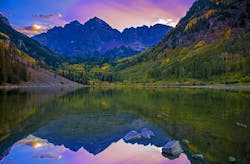Colorado SAIL Observatory to Observe U.S. Western Water Shortage
A climate observatory will be built along the Colorado River which will be utilized to observe and predict both rain and snow falls that will occur over the U.S. West.
According to The Department of Energy, the commencement of the project will be in the last week of August and will be conducted by the Lawrence Berkeley National Laboratory, reported The Science Times. The Surface Atmosphere Integrated Field Laboratory (SAIL) observatory will be equipped with technological advancements to push these efforts along.
According to The Science Times, the SAIL observatory will be located in Colorado, where the natural water found in the river is recorded to be snow and the rivers serve as the main water supply for the state. The technological advancements include old and new weather observatory mediums, including high-definition cameras, balloons, radar programs, and other systems, reported Science Times.
This comes in the wake of the western water crisis, in which western states have been experiencing excessive levels of drought for the past 20 years. The Colorado River was recently declared to incur water shortage, and predictions suggest that a mass shortage of water supply will occur in the regions of Mexico, Arizona, and Nevada combined.
The Colorado observatory will conduct examinations of: numerous rain and snowfall attributes, including clouds, precipitation rates, and soil moisture, biological diversity, drought, and wildfires.
According to Boise State University expert Alejandro Flores, the mountainous areas of the state are challenging places to gather weather data. Flores mentioned in a CBSN report that the information regarding the correlation of land and atmosphere is not yet fulfilled.
According to Berkeley Laboratory expert and on-site researcher Ken Williams, the SAIL observatory will face challenges in predicting the west coast water supply, specifically with water composition and soil moisture. To cover the missing supplies, University of Arizona expert Mike Crimmins said that back-to-back wet seasons must take place, reported The Science Times.
